Progress continues to be slow on the bedroom foyer walls, but the good news is that my hand is almost completely healed. Where the pain was originally about a 7 on a scale of 1 to 10, This morning, it’s about a 2. I have regained full mobility of my fingers, so doing the big jobs like cutting and installing trim is now easy again. But I realized very quickly yesterday that doing things that require fine motor skills, like sanding the wood filler on all of the nail holes, was still quite painful. But this morning, I went into the foyer to do a little bit more sanding, and instinctively, I picked up the sandpaper with my right hand and started sanding. It took a couple of minutes for me to realize I was actually sanding with my right hand with no pain. So as of this morning, it looks like I’m fully back in business.
With that said, here’s the progress. I have all of the picture frame molding and the crown molding installed in the foyer. I didn’t remove any of the crown molding that was already there, even on this area where the crown molding stopped short of the corner where it had once wrapped around the built-in cabinet that was here. Once it’s all sanded smooth and painted, that joint won’t be noticeable.
I’m really pleased with how this picture frame molding turned out, and I’m very glad I decided to go with one rectangle on each wall regardless of how wide the wall is.
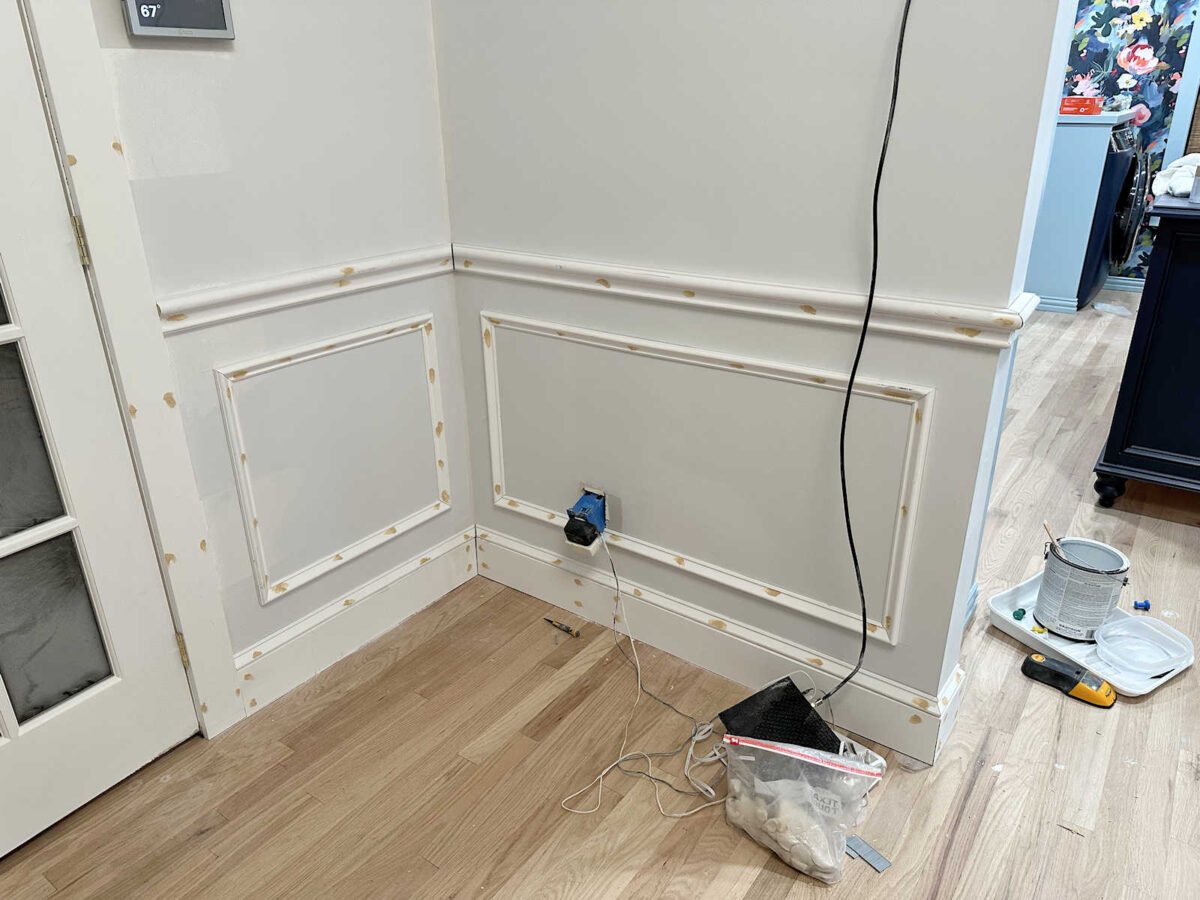
I think if I had tried to break up these wider areas into smaller rectangles, it would have looked too busy. I’m aiming for colorful but calm, not busy.
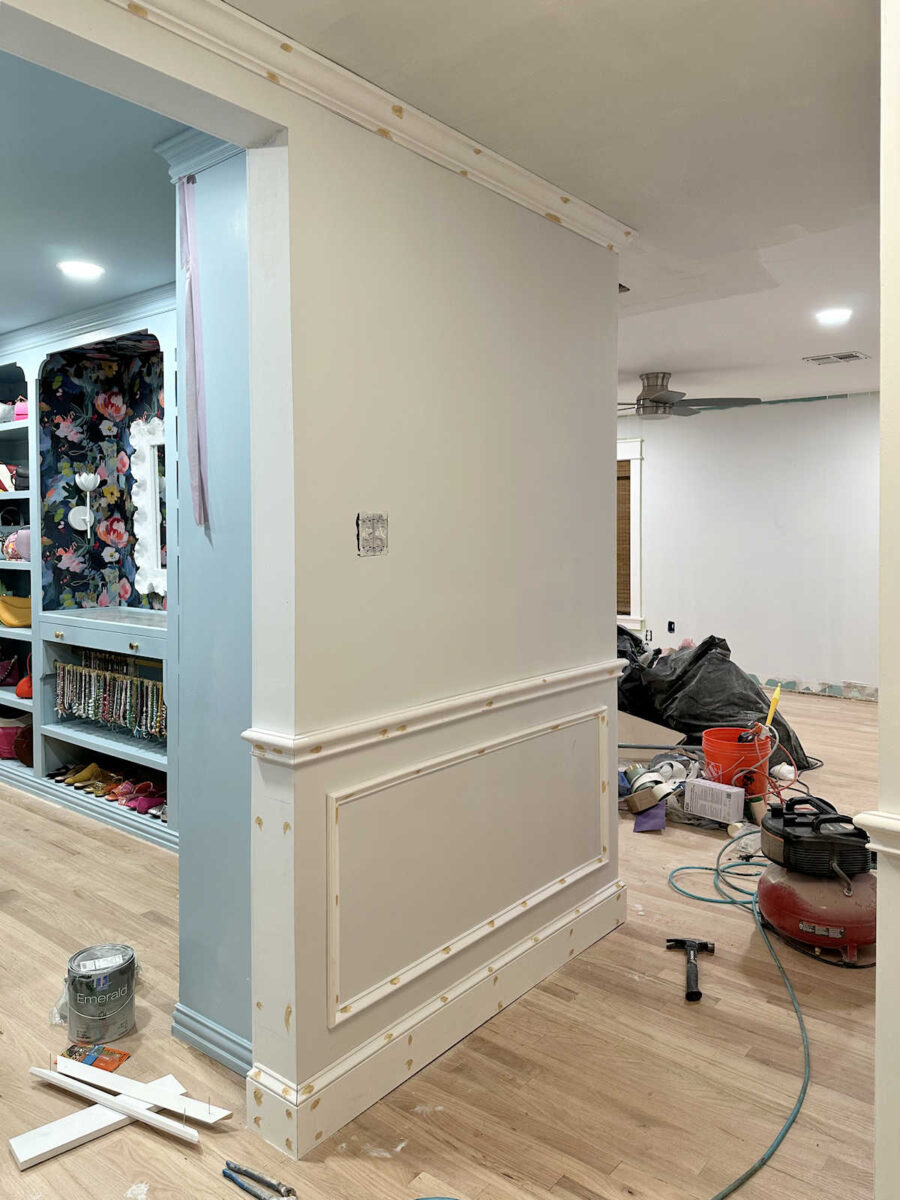
And, of course, it always has to go through this stage where it looks like the molding has chicken pox with all of the nail holes filled with wood filler.

A lot of people use caulk for the nail holes, and that’s a perfectly fine option. It’s also much faster and easier. The reason I do wood filler instead is because I find that caulk shrinks a little bit as it dries and leaves slightly detectable divots where each nail is. I like that I have more control over wood filler because, while it shrinks also, I can build it up a bit to account for the shrinkage and then sand it perfectly smooth.

On this trim, I ran into two problems. First, when I got out the longest piece of crown molding for the foyer, I noticed that somehow a large chunk of it had been broken off. That had to have happened in transport because there’s no way I would have missed that in the store. It was about five or six inches long, and about half an inch into the crown molding at its deepest point. I didn’t want to discard that piece because trim isn’t cheap, and I couldn’t cut that section out because then I wouldn’t have had enough crown molding to finish the foyer. So I decided to go with it and find a way to repair it.
I could kick myself for not taking a picture of it before trying to repair it, but you can see here that I started off trying to fill it with wood filler. It was a mess.
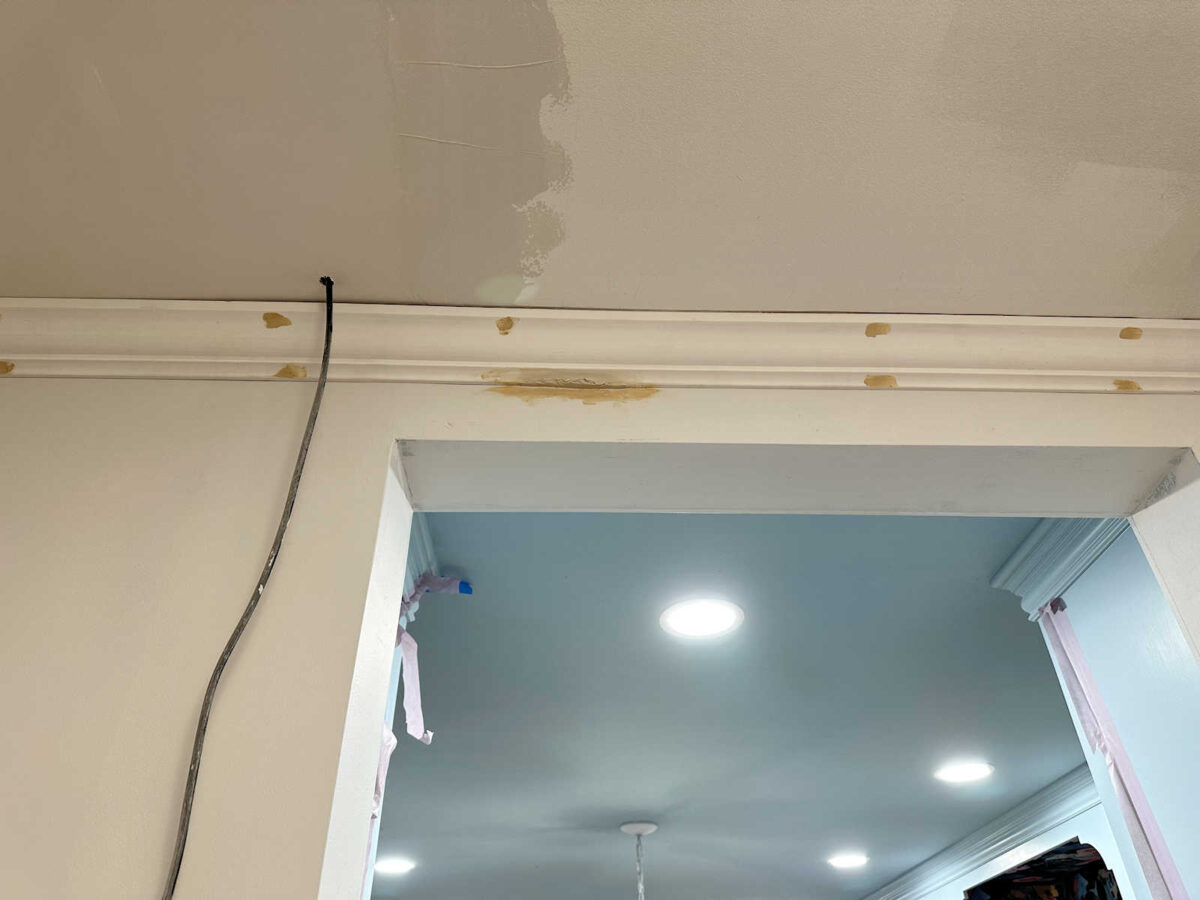
The other problem I had was with the chair rail on the right of the doorway into the walk-in closet. Again, I forgot to take a picture of the before, so I tried to recreate what I was working with using these scraps. The reason it didn’t come together is because that door jamb is obviously not square, so my pieces that were cut at perfect 45-degree angles didn’t meet. And this one was bad, but I was still confident that I could disguise it somehow. It looked something like this…

So as I was trying to fix the crown molding with wood filler, I thought to myself, “I just wish I had something that was less wet and more moldable.” And then it dawned on me. I DO! I just made a chandelier out of a product just like that! Air dry clay fit the bill! I wasn’t sure that it would work, but I decided to give it a try. I pushed it into the crack and then molding it as much as I could with wet fingers, but I wasn’t trying to make it look perfect at this point because air dry clay sands beautifully. Here’s what it looked like when I left it to dry overnight.
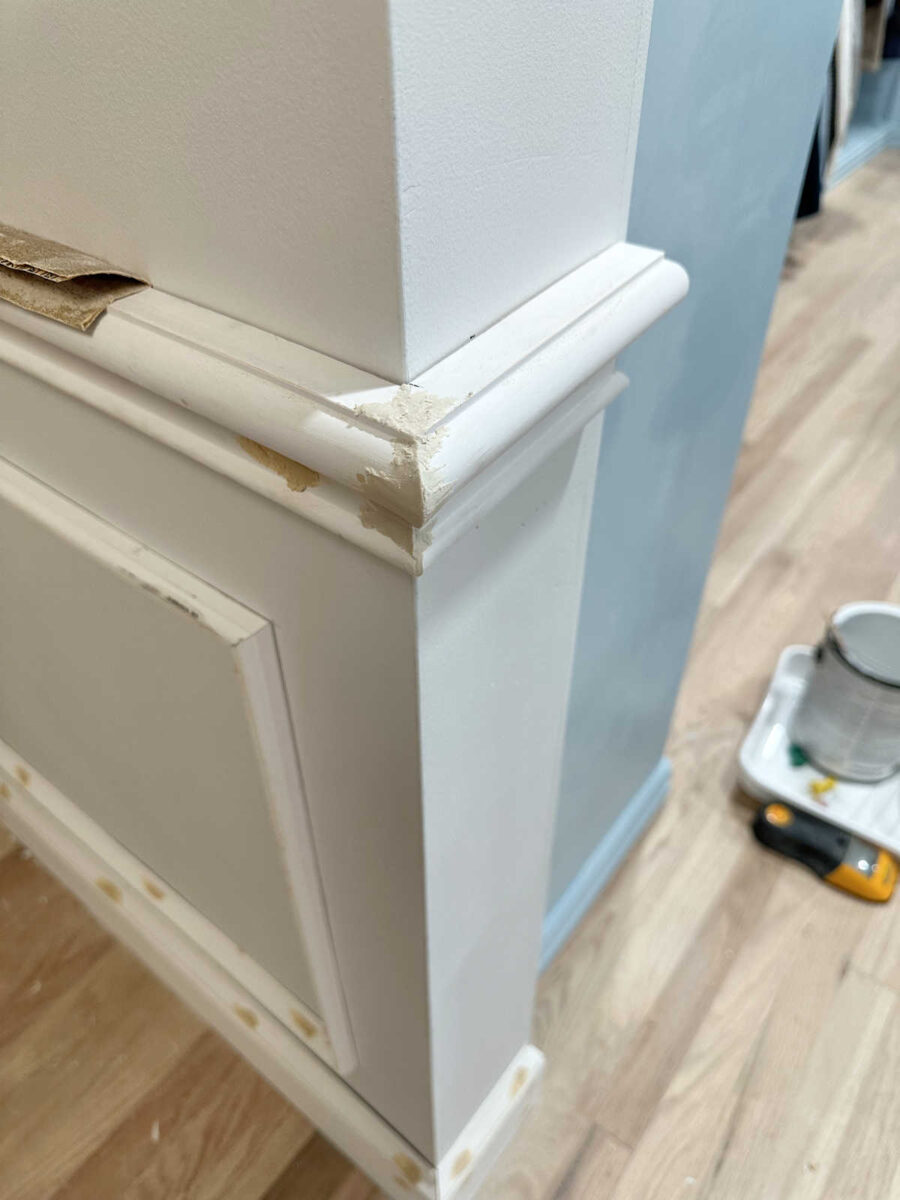
Here’s another look. You can see that it’s definitely not perfect. Just like I do with wood filler, I wanted to build it up a bit to allow for shrinkage as it dried.
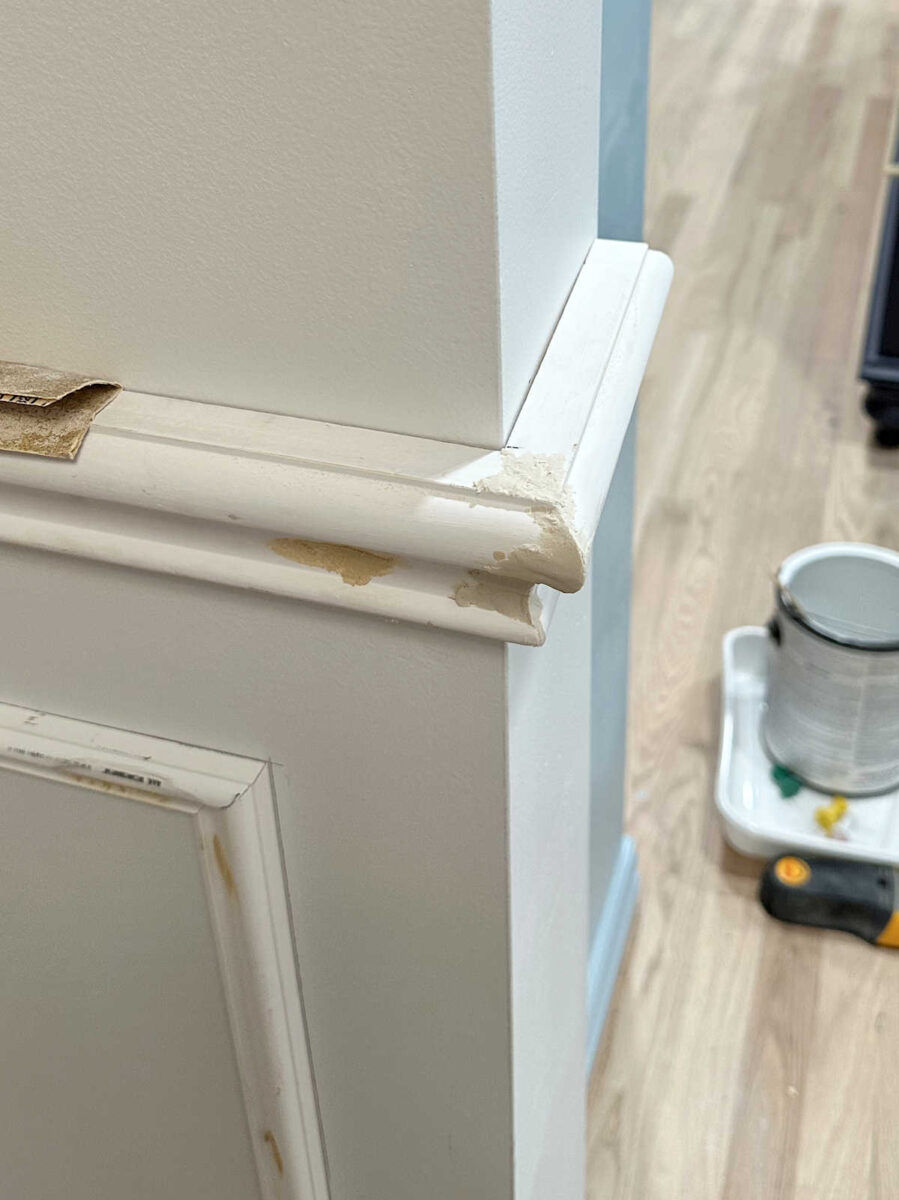
And then this morning, I sanded the dried air dry clay. Just look at this!
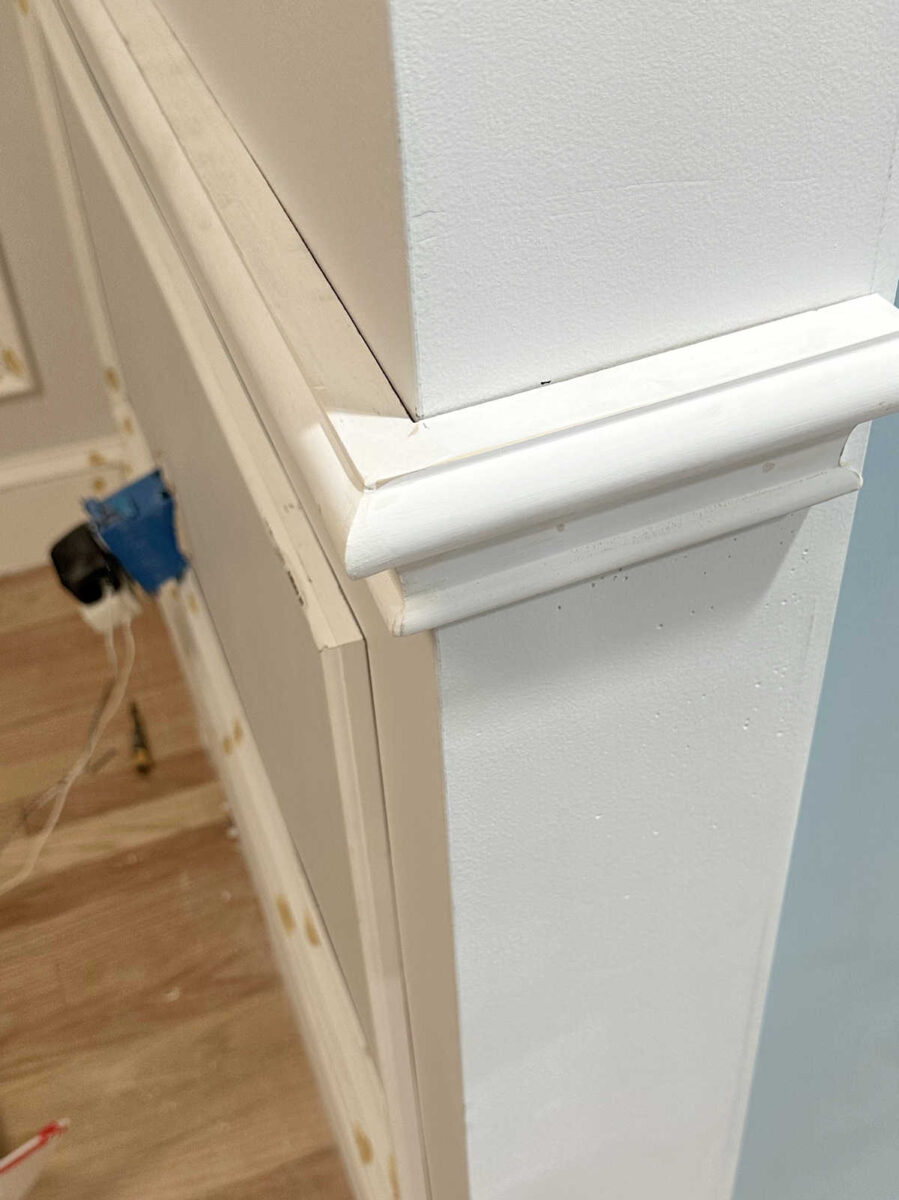
Y’all!!! I can’t even believe how good that turned out!! Air dry clay is my new secret weapon for near-perfect trim. Oh, I so wish I had taken a picture of this before I filled it in. You would be even more amazed. You’ll just have to trust me when I say that the gap on the trim at the very furthest point from the wall was maybe as big as 1/4-inch, but certainly no smaller than 3/16-inch.
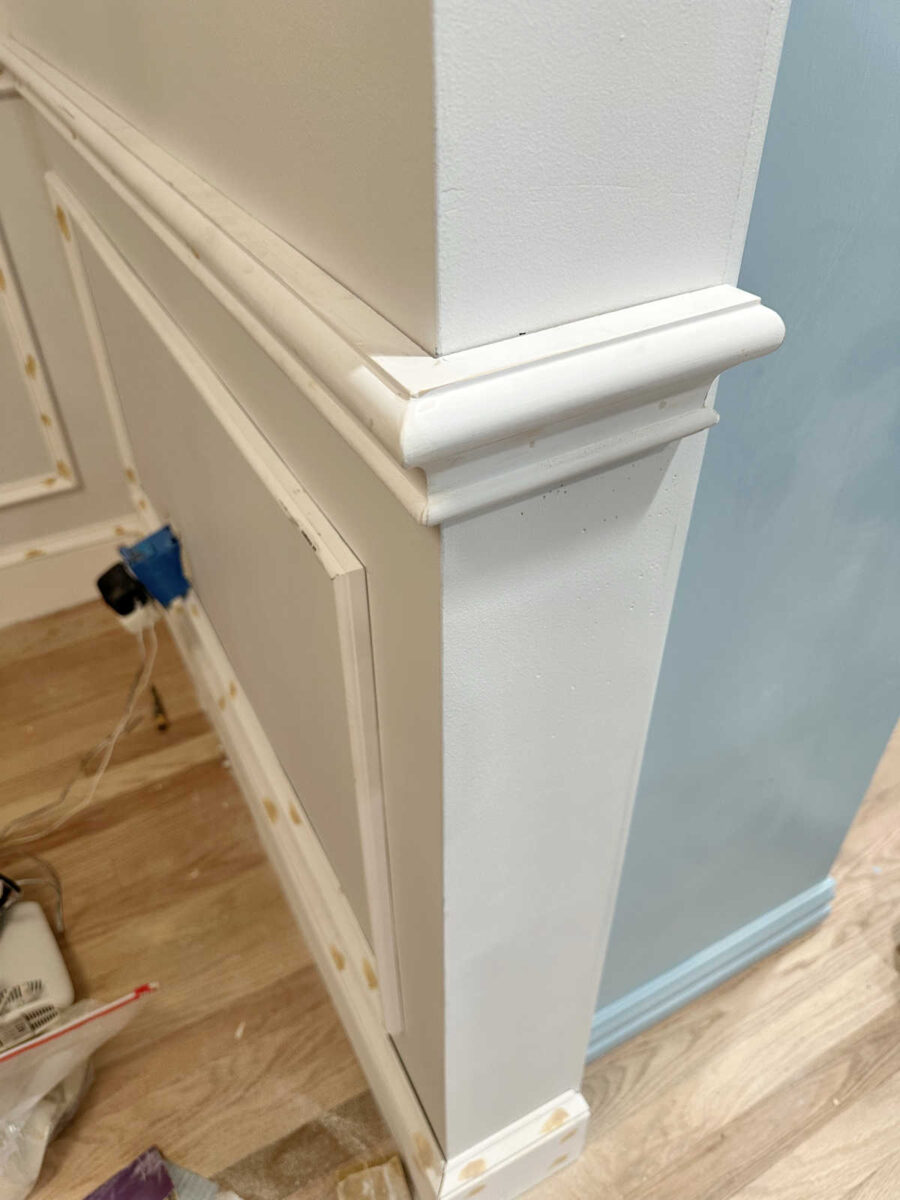
So I dug out the wood filler that I had used to try to repair the crown molding, and I replaced it with air dry clay as well. This one was much deeper than the one on the chair rail, so as I started sanding it this morning, I realized that it’s not completely dry yet. It’ll need another day before I can sand it perfectly smooth, so it’s still looking a bit rough. But once it’s completely dry and sanded smooth, you’ll never know that there was a big 5-inch-long, 1/2-inch deep chunk of trim ripped off of this crown molding.
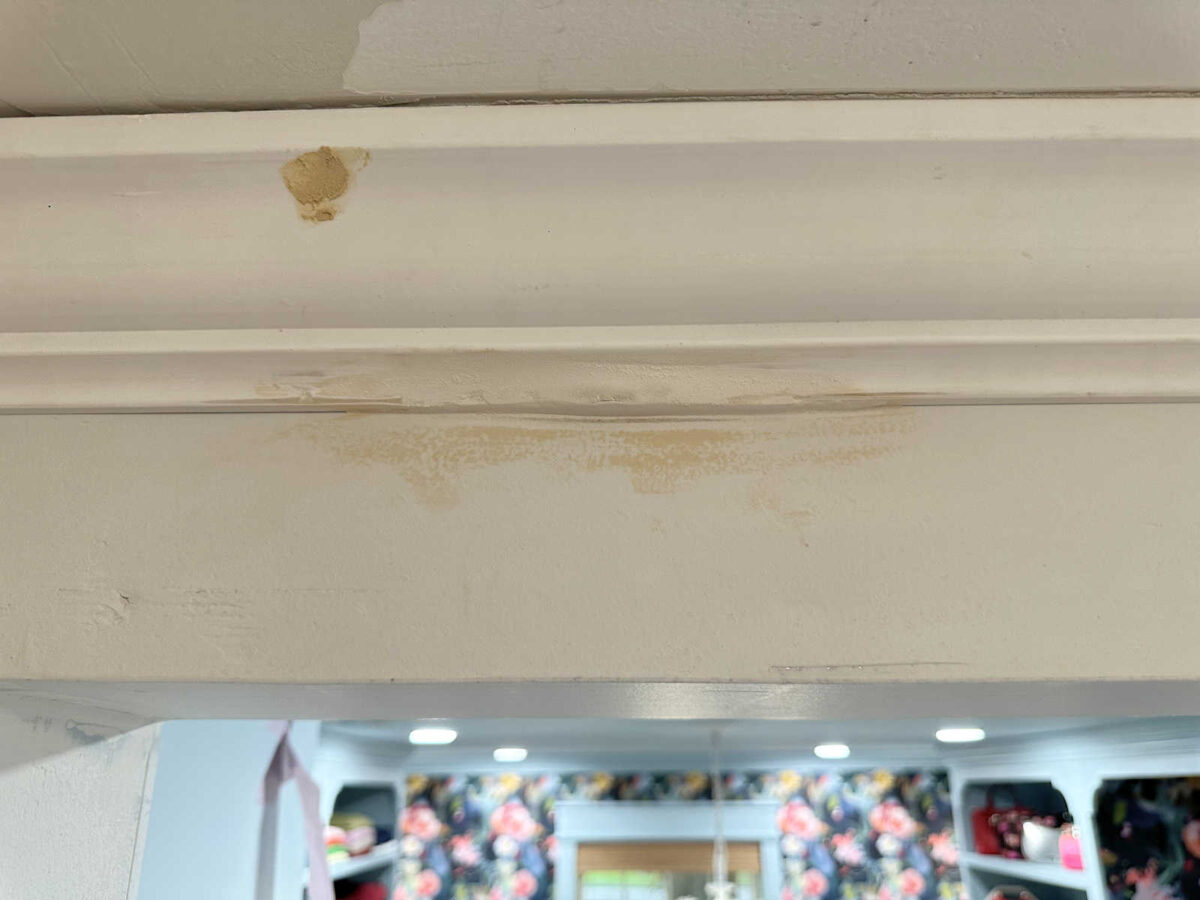
I wish I had discovered this years ago. I’m not a finish carpenter, so my trim is always imperfect, and I’m always having to fill in cracks and joints with wood filler. But no more! My product of choice for this from now on will be air dry clay. It takes a little longer to dry than wood filler, but it’s so much easier to mold, and it’s also a little bit easier to sand than wood filler. I’m sure I’ll have many more uses for it once I start installing the trim in the bedroom, so I’ll be sure to get before pictures when I use it again.
More About Our Master Bedroom
see all master
bedroom diy projects
read all master
bedroom blog posts




